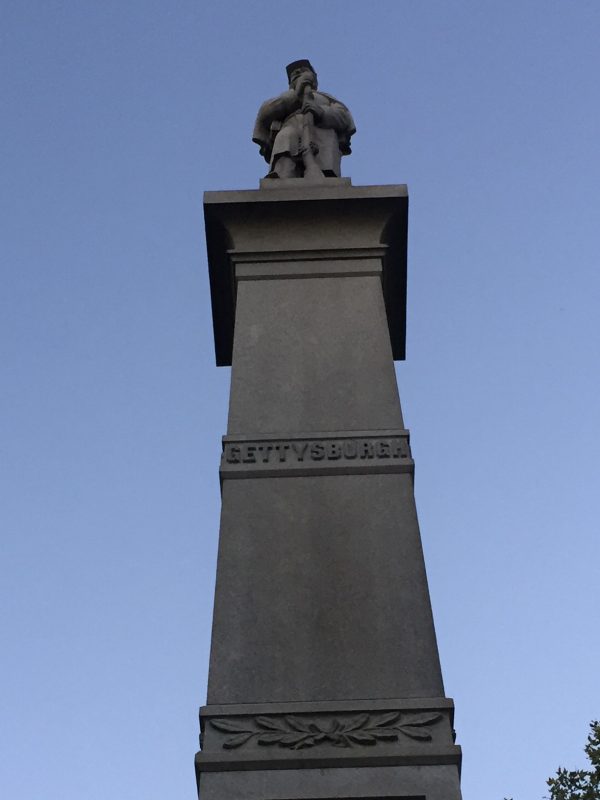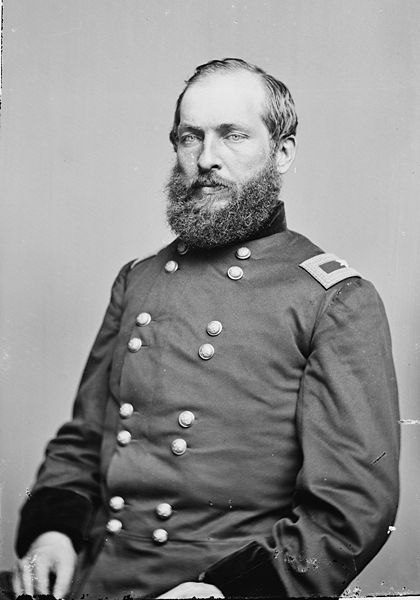Battlefield Markers & Monuments: Lake County, Ohio Soldiers’ Monument
 Lake County is the smallest county in the entire state of Ohio. It lies along Lake Erie in the northeastern corner of the state; its county seat, Painesville, is about 30 miles from downtown Cleveland. It is a beautiful county full of attractive towns, a high quality of life, and rich history. I have had the pleasure to live in Lake County since 2009. While the county is not known for Civil War battlefields, it did send young men off to fight for the Union in the Civil War. Many of them never came home.
Lake County is the smallest county in the entire state of Ohio. It lies along Lake Erie in the northeastern corner of the state; its county seat, Painesville, is about 30 miles from downtown Cleveland. It is a beautiful county full of attractive towns, a high quality of life, and rich history. I have had the pleasure to live in Lake County since 2009. While the county is not known for Civil War battlefields, it did send young men off to fight for the Union in the Civil War. Many of them never came home.
 On July 3, 1880, a monument to the Civil War soldiers of Lake County was unveiled and dedicated in Painesville’s town square. The monument is made up of a base inscribed with quotes about the sanctity of the Union from such notable Americans—and southerners—as George Washington and Andrew Jackson. Above the quotes, on all four sides, are the insignia of the major military branches in which Lake County soldiers served during the war: infantry, cavalry, artillery, and naval service. Finally, continuing up, one sees the names of Civil War battles at which Lake County soldiers fought and died, including Winchester, Gettysburgh, and Vicksburgh (yes, the names of the latter two battles are misspelled). At the top of the monument stands a Civil War soldier.
On July 3, 1880, a monument to the Civil War soldiers of Lake County was unveiled and dedicated in Painesville’s town square. The monument is made up of a base inscribed with quotes about the sanctity of the Union from such notable Americans—and southerners—as George Washington and Andrew Jackson. Above the quotes, on all four sides, are the insignia of the major military branches in which Lake County soldiers served during the war: infantry, cavalry, artillery, and naval service. Finally, continuing up, one sees the names of Civil War battles at which Lake County soldiers fought and died, including Winchester, Gettysburgh, and Vicksburgh (yes, the names of the latter two battles are misspelled). At the top of the monument stands a Civil War soldier.
The monument is tall and attractive but honestly not that much different than many similar monuments erected in city squares in countless towns both north and south. But something else was significant about Lake County, Ohio in 1880. That was a presidential election year, and the Republican candidate that year, James A. Garfield, was a resident of Mentor, a Lake County village just a few miles west of Painesville. Garfield, arguably one of the two most famous Americans in the country that summer (the other being his Democratic opponent, the Union Civil War hero Winfield Scott Hancock), attended and spoke at the dedication of the Painesville monument.
 Garfield was, of course, the keynote speaker that day. The speech he offered, however, was not a typical speech for that era of Civil War memory. While many speakers dedicating many monuments extolled the virtues of their side and described their enemies as the true opponents of liberty, Garfield took a different tack. He acknowledged the horrors of war and wondered how many brave young men would still step forward if they truly understood that they might die or be horribly maimed. And, instead of simply honoring both sides for their gallantry under fire, he searched for the true meaning of the Civil War:
Garfield was, of course, the keynote speaker that day. The speech he offered, however, was not a typical speech for that era of Civil War memory. While many speakers dedicating many monuments extolled the virtues of their side and described their enemies as the true opponents of liberty, Garfield took a different tack. He acknowledged the horrors of war and wondered how many brave young men would still step forward if they truly understood that they might die or be horribly maimed. And, instead of simply honoring both sides for their gallantry under fire, he searched for the true meaning of the Civil War:
 “And, fellow citizens, that silent sentinel that crowns yon granite column will look down upon the boys who shall walk these streets for generations to come, and he will not let them sleep when the country calls. More than the bugler on the field, from his granite lips will go out a call that the children of Lake County will hear after the grave has covered us all and our immediate children. That is the teaching of your monument; that is its lesson. It is the lesson of sacrifice for what we love; the lesson of heroism for what we mean to sustain; and that lesson cannot be lost on a people like this. It is not a lesson of revenge; it is not a lesson of wrath…”
“And, fellow citizens, that silent sentinel that crowns yon granite column will look down upon the boys who shall walk these streets for generations to come, and he will not let them sleep when the country calls. More than the bugler on the field, from his granite lips will go out a call that the children of Lake County will hear after the grave has covered us all and our immediate children. That is the teaching of your monument; that is its lesson. It is the lesson of sacrifice for what we love; the lesson of heroism for what we mean to sustain; and that lesson cannot be lost on a people like this. It is not a lesson of revenge; it is not a lesson of wrath…”
James Garfield understood war as only one who has fought in it can. He understood that some ideas—like democracy and equality for all—are, in fact, worth fighting and dying for. But he did not sugar coat or glorify war. To him, the Civil War was certainly worth fighting. But that did not make the death and destruction any easier to accept. This made monuments like the one in Painesville so important to remind future generations (like ours) of the sacrifices of his generation and the enduring work that must be done to maintain a government “of the people, by the people, for the people.”
Awesome! I haven’t been to Painesville in years and forgot the statute was there. Performed with a brass quintet in the church behind it, though! Will have to stop by and pay my respects.